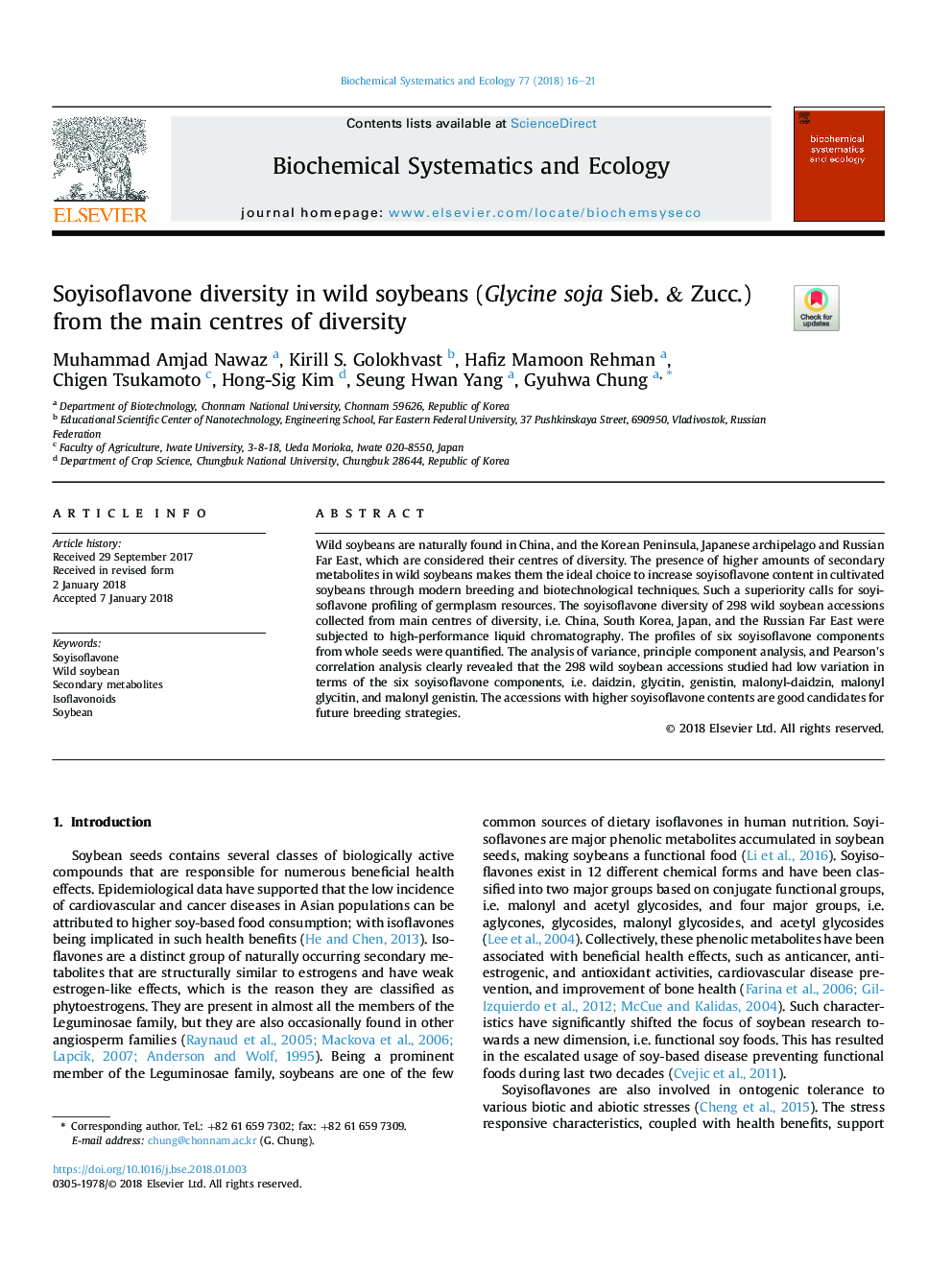| Article ID | Journal | Published Year | Pages | File Type |
|---|---|---|---|---|
| 7767706 | Biochemical Systematics and Ecology | 2018 | 6 Pages |
Abstract
Wild soybeans are naturally found in China, and the Korean Peninsula, Japanese archipelago and Russian Far East, which are considered their centres of diversity. The presence of higher amounts of secondary metabolites in wild soybeans makes them the ideal choice to increase soyisoflavone content in cultivated soybeans through modern breeding and biotechnological techniques. Such a superiority calls for soyisoflavone profiling of germplasm resources. The soyisoflavone diversity of 298 wild soybean accessions collected from main centres of diversity, i.e. China, South Korea, Japan, and the Russian Far East were subjected to high-performance liquid chromatography. The profiles of six soyisoflavone components from whole seeds were quantified. The analysis of variance, principle component analysis, and Pearson's correlation analysis clearly revealed that the 298 wild soybean accessions studied had low variation in terms of the six soyisoflavone components, i.e. daidzin, glycitin, genistin, malonyl-daidzin, malonyl glycitin, and malonyl genistin. The accessions with higher soyisoflavone contents are good candidates for future breeding strategies.
Related Topics
Physical Sciences and Engineering
Chemistry
Organic Chemistry
Authors
Muhammad Amjad Nawaz, Kirill S. Golokhvast, Hafiz Mamoon Rehman, Chigen Tsukamoto, Hong-Sig Kim, Seung Hwan Yang, Gyuhwa Chung,
